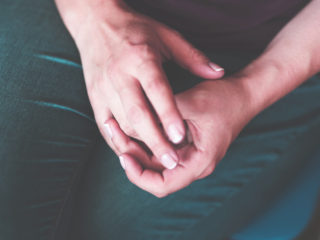This is a helpful case about how to succeed on motions for default judgment in the context of personal injury actions.
Date Heard: November 14, 2017 | Full Decision [PDF]
The Plaintiff slipped and fell in a grocery store. She was 30 weeks pregnant at the time, taken to hospital by ambulance as a precaution, and discharged. She ended up giving birth to a stillborn child almost 2 months later. Counsel was retained to commence an action which was never defended, and the Plaintiff moved for default judgment.
The motion record included the ambulance, hospital, family doctor and pathology records as well as a medical/legal opinion from the family doctor identifying the accident-related injuries as “lumbar spine strain and right hip strain”. There was no indication that there was any relationship between the accident and the stillbirth. OHIP’s subrogated interest was only $695.92.
In the statement of claim, the Plaintiff sought general damages in the amount of $65,000, $10,000 for a loss of earning capacity, and $25,000 for past and future medical expenses. Justice Penny granted partial judgment for special damages and disbursements, but adjourned the claim for general damages out of concern regarding the evidentiary basis to assess same. The matter then came on for an undefended trial before Justice Pollack to address unliquidated damages only.
The Plaintiff testified and expressed her belief that the stillbirth was related to the incident. She expressed concern about continuing pain impacting on possible future employment and requiring future care.
Justice Pollack commented that the medical notes filed were often “illegible” and written in “medical shorthand”. There were no expert reports commenting on the Plaintiff’s ability to earn a living or care for herself into the future. Although a brief medical/legal report was before her indicating the extent of the accident-related injuries, she noted that there were no reports or notes commenting on the interplay between the Plaintiff’s injuries, depression, and stillborn child. The Court noted that it was “not in a position to interpret the meaning or significance of many of [the medical notes]”, and “there is no evidence on what her limitations will be with respect to future employment”. Further, causation was a serious issue. There was no evidence connecting the Plaintiff’s injuries with the sequence of events leading to the loss of her unborn child. The Plaintiff could not rely on the material contribution test, because it had not proven it was “either impossible to prove”, or that the “[she] was unable to lead evidence on causation”.
The Court did acknowledge the reduced burden of proving a loss of earning capacity. The Plaintiff did not need to establish her reduced earning capacity on the balance of probabilities. She only needed to establish a “real and substantial risk of a future pecuniary loss”. The Court wrote, citing the Ontario Court of Appeal in Graham v Rourke:
In Graham v. Rourke (1990), 75 O.R. (2d) 622 (Ont. C.A.), at p. 634, Doherty J.A. stated that the plaintiff need not prove future pecuniary loss on a balance of probabilities:
A trial judge who is called upon to assess future pecuniary loss is of necessity engaged in a somewhat speculative exercise… The ultimate questions to be determined – will the plaintiff suffer future loss and, if so, how much? – cannot be proved or disproved in the sense that facts relating to events which have occurred can be proved or disproved. A plaintiff who seeks compensation for future pecuniary loss need not prove on a balance of probabilities that her future earning capacity will be lost or diminished or that she will require future care because of the wrong done to her. If the plaintiff establishes a real and substantial risk of future pecuniary loss, she is entitled to compensation.
The Court held that the Plaintiff had not met the reduced burden. There was no evidence, other than the Plaintiff’s own words in her own affidavit, to conclude there was a loss of earning capacity. It must however be remembered that the undefended trial was limited to an assessment of general damages for the lumbar and right hip strains as stated in the medical/legal report that was filed. The Plaintiff was understandably given some leeway in her oral evidence and The Court addressed many concerns that were not in fact being advanced by counsel.
The Court only awarded the Plaintiff nominal damages of $3,000, $45 for ambulance expenses, and $2,697.90 in costs, in addition to the liquidated amounts (including the OHIP subrogated claim) that had been awarded by Justice Penny.
*Co-written with Piera Segreto
Read the full decision [PDF]











